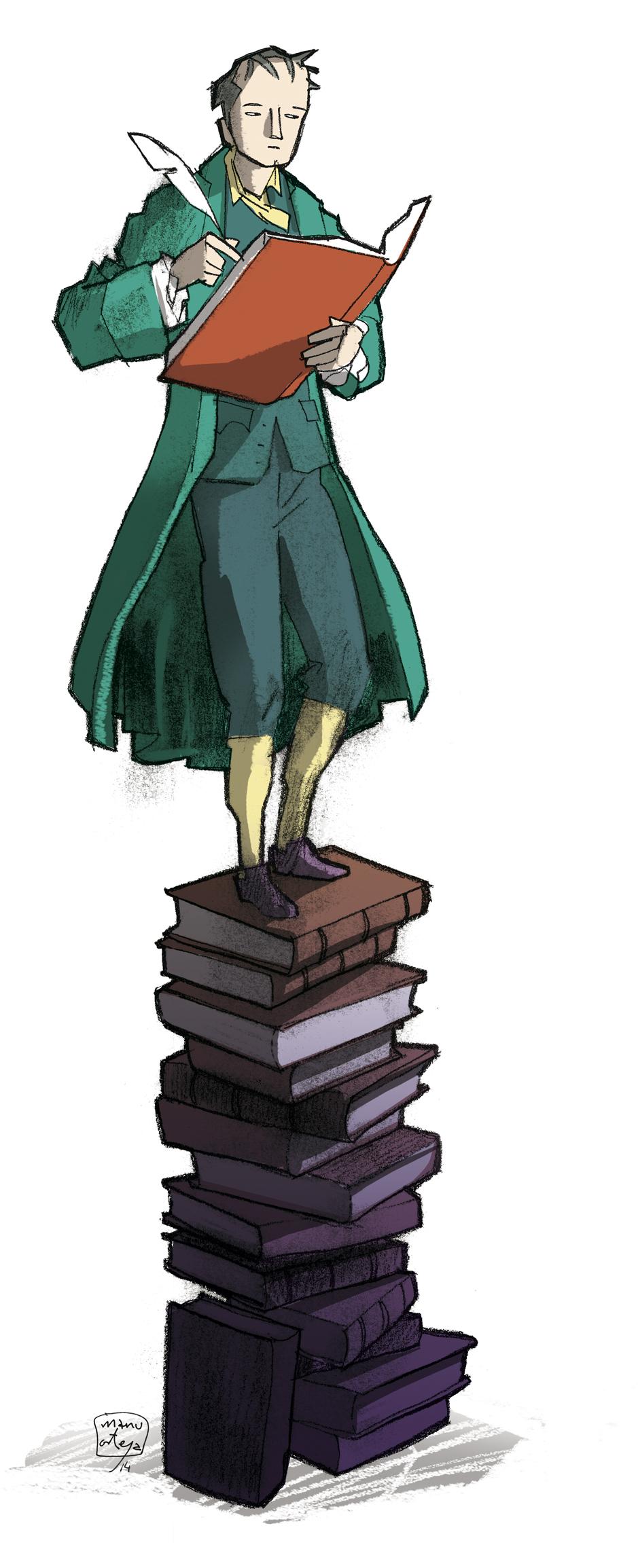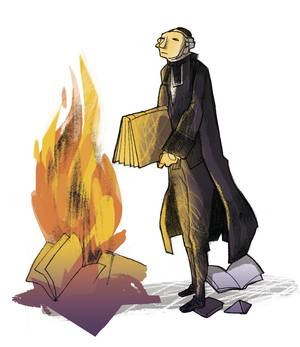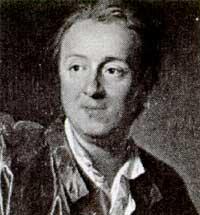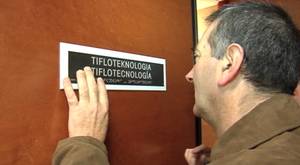Encyclopedia Diderot
2014/03/01 Etxebeste Aduriz, Egoitz - Elhuyar Zientzia Iturria: Elhuyar aldizkaria

The prison again brought two candles as the previous day. One told him he had enough, it was summer and darkened late. However, the jailer advised him to keep him, perhaps they would come well for the long winter nights. Then he realized that Diderot was not detained for two days and that he could spend a lot of time in prison. His disgust. How much would he have to wait to continue with the project of the encyclopedia which had just been launched?
In 1728, when he arrived in Paris at the age of 16, few thought that Denis Diderot would become so revolutionary. He was born in Langres, son of a cutlery, and, following the wishes of his parents, his initial intention was to become a priest. But in Paris, things start to change. He began a bohemian life, the books he took from the library were increasingly heterodox and, along with the books, changed Diderot thought.
He decided to be a writer and dedicated himself to translation. Translated works by English authors. And in 1746 he published anonymously Penseés Philosophiques (Philosophical Thoughts). In it he criticized Catholicism and faith and claimed deism. He praised the works of Newton, Muschenbroek, Hartzoeker and Nieuwentit: "Thanks to the work of these men the world is no longer a god; it is a machine with its wheels, rope, pulley, docks and loads". This book was condemned by Parliament.
That same year, an editor commissioned the translation of the successful English encyclopaedia of Ephraim Chambers. It was a work of a couple of years, if Diderot had not imagined that a simple translation was not enough. Instead, he decided to perform an encyclopedia that collected all the knowledge of the time. Each theme of the Encyclopédie will be written by the best expert and funded by subscription. In addition, it would focus on critical and sceptical thinking.
As he did not have great reputation, to give solidity to the project was co-editor the prestigious mathematician Jean-Baptiste d'Alembert and member of the Academy of Sciences. Between them they soon reached a lot of passionate collaborators: writers, scientists and even priests... Diderot's plan was underway.
But just to begin the project, in 1749, he was arrested. He already had complaints. In 1747 Pastor Hardy Levaré told the police: "The comments made by Diderot make it clear that he is a deist, if not worse. Turn on Jesus Christ and the Virgin, things that I dare not write... I've never talked to that young man and I don't know him directly, but they have told me that he has incredible talent and that his conversation is very entertaining. In a talk the Parliament acknowledged that two years ago he was convicted and author of one of the two burned works. They told me that he has worked for more than a year another work, more dangerous for religion."
That risky work was Lettre sur les aveugles à l'usage de ceux qui voient (Letter on the blind for use of those who can see). In this brief writing he wrote about the possibility of teaching the blind to read through touch (the same idea Braille would have developed a century later). But, above all, from various experiences of the blind (or excuses), he launched ideas contrary to an invisible God and affirmed that knowledge is achieved through the senses and not through heavenly revelation. All this meant a sufficient provocation for the king to imprison Diderot.
He spent a few weeks inside and just leaving resumed the encyclopedia project. He would have to be very attentive, as he had his threat clear, but he held firm the idea of expanding knowledge based on science and not on the Sacred Scriptures, while making the path from deism to atheism. In addition, after passing through jail, he became a small hero for many. He received the praise of Voltaire and opened the doors of the halls of Paris. In these halls were gathered the most progressive freelancers and intellectuals of the time around the delicious dishes to talk about what could not be talked about in the street. And Diderot became one of the most active and passionate speakers of those halls.
Diderot had things clear. The structure of the encyclopedia would be groundbreaking. The entries were in strict alphabetical order, not as in the dictionaries of the time, where they were ordered by subjects, depriving theology, church and nobility. And the biography would not be included so that they were not taken by great men of history, but by ideas, objective knowledge, crafts and trades.
He also found ways to fight against church and religion. The censors could not deny, for example, the detailed study of some biblical subjects. For example, in the article written by the priest Edme Mallet on Noah's ark, he calculates how many species of animals were on Earth, how many waters, straws and sheep (for carnivores) would have to be embarked, how it would have to be distributed to animals to avoid overturning the ship, how many excrements Noah and his two children would have to daily expel, etc. In the entry "Eucharist" there is a note that sends to "cannibalism". Etc.
In 1752, when the first two volumes of the encyclopedia were published, the Royal Council forbade further publication. But thanks to the help of Madame Pompadour he could continue. In 1759, however, the Paris Parliament, coinciding with the church, forbade him again. D'Alembert, frightened, left the project. For his part, Diderot managed to continue publishing in semiclandestinity. In 1772, 26 years after the beginning of the project, the last volume was published, on 28. In total, the encyclopedia became the symbol of Illustration with 20 million words and 2,885 illustrations.
It was very successful, they sold 4,000 encyclopedias. And it was not cheap: it was worth a year of salary from a master craftsman. Before the end of the century, another 25,000 were to be printed.

Gai honi buruzko eduki gehiago
Elhuyarrek garatutako teknologia






